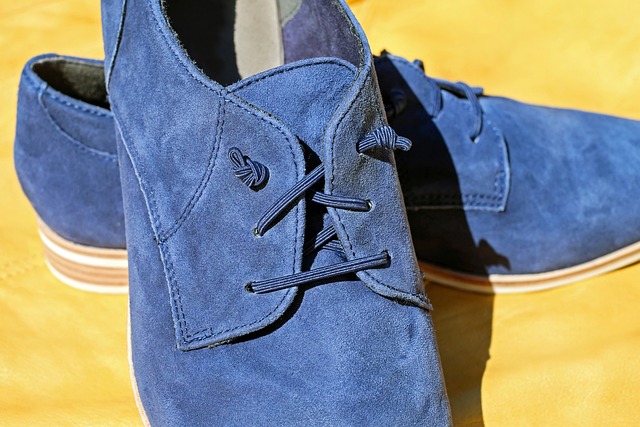Clarks Shoes: A Practical Guide to Styles, Fit, Care, and Buying Tips
Clarks has built a reputation as a trusted footwear brand known for combining comfort with timeless design. Whether you are searching for everyday casual shoes, professional work footwear, or durable options for active lifestyles, understanding what makes this brand distinctive can help you make informed purchasing decisions. This guide explores the background of the company, highlights popular styles, explains how to find the right fit, examines the materials and construction methods used, and provides practical advice on caring for your footwear to maximize its lifespan.

Clarks shoes have become synonymous with quality craftsmanship and comfortable design. From their origins in the 19th century to their modern collections, the brand continues to evolve while maintaining core values of durability and wearability. This guide walks you through essential aspects of selecting, fitting, and maintaining your footwear.
What is the Brand History and Heritage of This Footwear Company?
Clarks was founded in 1825 in Somerset, England, by brothers Cyrus and James Clark. The company began with a simple sheepskin slipper and gradually expanded into a full-range footwear manufacturer. Over nearly two centuries, the brand has maintained its commitment to innovation in comfort technology while preserving traditional craftsmanship techniques. The introduction of the Desert Boot in 1950 marked a turning point, establishing the company as a creator of iconic styles that transcend trends. Today, the heritage of quality materials and attention to detail remains central to the brand identity, with manufacturing and design facilities operating globally while honoring the original Somerset roots.
Which Popular Styles and Current Collections Are Available?
The brand offers diverse collections catering to various needs and preferences. The Desert Boot remains a flagship style, recognized for its suede construction and crepe sole. Wallabee shoes feature distinctive moccasin-style stitching and are favored for casual wear. The Originals collection includes these heritage designs alongside updated interpretations. For professional settings, the brand produces oxford shoes, loafers, and dress boots with polished leather finishes. Active lifestyle collections incorporate lightweight materials and flexible soles designed for all-day comfort. Seasonal releases introduce contemporary colorways and materials while maintaining the signature comfort features. Women’s collections range from ballet flats and heeled sandals to ankle boots and sneakers, while men’s options include brogues, chukka boots, and slip-on styles. Children’s footwear emphasizes proper support for growing feet with adjustable closures and durable construction.
How Do You Choose the Right Fit and Size?
Proper fit is essential for comfort and foot health. Start by measuring both feet while standing, as feet naturally expand under body weight. Measure length from heel to longest toe and width at the widest part of the foot. The brand typically uses UK sizing, which may differ from US or European measurements, so consult size conversion charts before purchasing. When trying shoes, wear the type of socks you plan to use regularly. There should be approximately a thumb’s width of space between your longest toe and the shoe’s end. The widest part of your foot should align with the widest part of the shoe. Walk around to ensure the heel does not slip and the shoe does not pinch anywhere. Different styles may fit differently due to design variations, so trying multiple sizes within a style can be helpful. Many retailers offer fitting guides specific to each collection. For online purchases, check return policies to allow for size exchanges if needed.
What Materials, Construction, and Durability Features Are Used?
Clarks employs various materials selected for specific performance characteristics. Premium leather, including full-grain and suede, provides breathability and molds to foot shape over time. Synthetic materials offer water resistance and easy maintenance in certain collections. Textile uppers provide lightweight flexibility for casual styles. Construction methods include cement construction for lightweight flexibility, Goodyear welt construction for resoling capability in premium lines, and direct-attach methods for athletic-inspired designs. Cushioning technologies such as Cushion Plus, Cushion Soft, and Ortholite insoles enhance comfort during extended wear. Outsoles range from traditional crepe rubber to durable rubber compounds with traction patterns suited to different surfaces. Stitching quality and reinforcement at stress points contribute to overall durability. With proper care, well-constructed pairs can last several years of regular use, though lifespan varies based on frequency of wear and environmental conditions.
How Should You Approach Care, Maintenance, and Warranty Information?
Proper maintenance extends the life of your footwear significantly. For leather shoes, remove surface dirt with a soft brush after each wear. Apply leather conditioner every few months to prevent drying and cracking. Use shoe trees to maintain shape when not in use. Suede and nubuck require specialized brushes and protective sprays to repel water and stains. Avoid wearing the same pair on consecutive days to allow materials to dry completely and regain shape. Rotate between multiple pairs when possible. Store shoes in a cool, dry place away from direct sunlight. Replace worn insoles to maintain comfort and support. For outsole wear, consider professional resoling services for higher-end styles with welted construction. Most footwear comes with a manufacturer’s warranty covering defects in materials and workmanship, typically valid for a specific period from purchase date. Warranty terms vary by region and retailer, so retain purchase receipts and review specific coverage details. Normal wear and tear, improper care, and accidental damage generally fall outside warranty coverage. Contact customer service or the original retailer for warranty claims, providing proof of purchase and detailed description of the issue.
Clarks footwear represents a balance of heritage craftsmanship and modern comfort technology. By understanding the brand’s history, exploring available styles, ensuring proper fit, recognizing quality construction, and following maintenance guidelines, you can select shoes that serve you well for years. Whether you prioritize classic design, everyday comfort, or professional appearance, informed choices lead to satisfying long-term wear.




